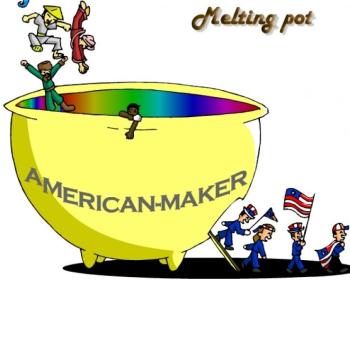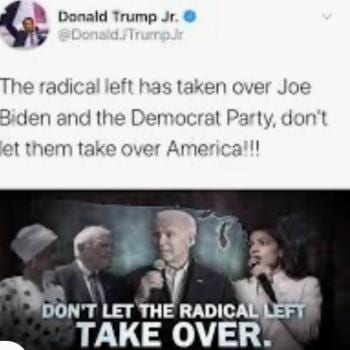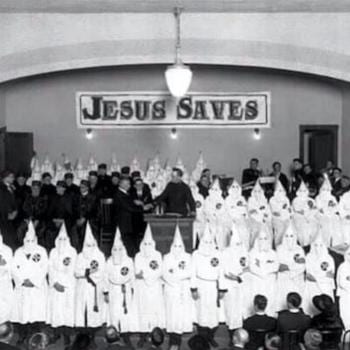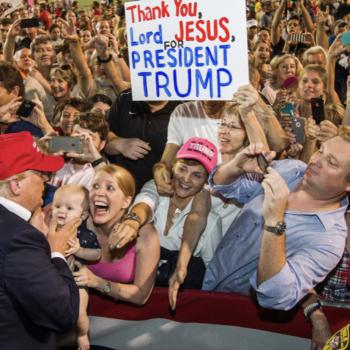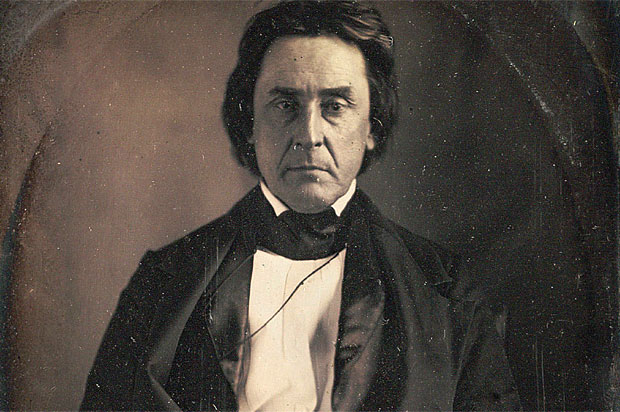
Ever heard of David Rice Atchison? Unless you are a real history nerd, I doubt it. I was reminded of him recently when I saw an article pop up on Facebook about a man who was “president for a day” so naturally, I looked into it.
I had read a little about Atchison and his role in the Kansas-Nebraska Act and the subsequent “Bleeding Kansas” era. But I had never heard tell of his supposed role as president for a day. Atchison’s story turns out to be a pretty interesting one.
Atchison was born in 1807 near Lexington, Kentucky. He was educated at Transylvania University in Lexington and then went on to a successful law career in Missouri. While practicing law in Missouri, he happened to represent a very famous client, one Joseph Smith, founder of the Mormon religion, in a land dispute case with some non-Mormon settlers in western Missouri. By the late 1830s, Atchison had begun his political career in the Missouri state legislature.
Aitchison’s national political career began in 1843 when he was appointed to fill the vacancy of a U.S. Senator who had died. He proved to be very popular among his peers and, in 1845, he was chosen to be President pro tempore at the young age of 38. This position placed him third in line of presidential succession and required him to act in place of the Vice President, should the V.P. be unavailable to perform his duties. Therein lies the confusion about Atchison’s role as President for a day.
The day in question was March 5, 1849 which, significantly, happened to fall on a Sunday. James K. Polk’s term had ended on Saturday, March 4th. President-elect, Zachery Taylor, refused to be sworn in on a Sunday (the scheduled day) on religious grounds. Technically, it could be claimed, and was by some, that since the previous administration had ended the day before, as President pro tempore, David Rice Atchison was acting Vice President. Some claimed that, since Zachery Taylor had not been sworn in yet, this elevated Atchison, temporarily, to the position of President. Thus, a myth was born.
It should be noted that almost all historians discount this completely. They point out that Atchison’s term as President pro tempore also ended on March 4th and he had not been properly sworn in for another term yet either. Historians also point out that nowhere in the Constitution does it say that a President-elect must be sworn in to hold the office, only to act as the chief executive. In other words, even though Taylor had not officially been sworn in, he was still President, he just could not perform any executive actions yet. So while all of this might make a great trivia question, as far as historians are concerned, it is much ado about nothing in the end.
Most interesting to me about Atchison’s story is his career in subsequent years after the “President for a Day” moment.
David Rice Atchison was a rabid proponent of slavery. He served in the U.S. Senate through some of the most tumultuous years leading to the Civil War. In the 1840s and 50s, Manifest Destiny was in full-throttle mode. The nation was hell-bent on expanding west. The major bi-product of this expansion was the growth of sectionalism and, more specifically, the division between North and South over the issue of the expansion of slavery (I wrote at some length on this topic HERE). Atchison was in favor of popular sovereignty, which would allow new states or territories to vote to decide if they would allow slavery or not. Atchison sponsored the Kansas-Nebraska Act and encouraged its author, Stephen Douglas, to push it through Congress.
Atchison’s support of popular sovereignty was actually superficial since it was far outweighed by his support of slavery. He acted on this by helping put a very fat thumb on the scales to make sure the vote came out in favor of slavery. Atchison was one of the leaders of the pro-slavery “Border Ruffians” who swarmed into the Kansas Territory from neighboring slave state, Missouri, to vote illegally. Things got really crazy when the anti-slavery factions from surrounding states and territories also sent in people to vote illegally. In the end, the pro-slavery faction won the vote and Kansas was officially a slave territory. Here is a statistic to drive home just how crazy and illegal this vote was; there were approximately 1,500 residents of Kansas who were legally eligible to vote, yet, over 6,000 votes were cast! In the end, the pro-slavery camp cheated better than the anti-slavery one did. A pro-slavery government was set up. To add a whole other level to the madness, the anti-slavery citizens refused to recognize the new government and simply set up a second government in the town of Lawrence complete with a constitution banning slavery. Obviously, the stage was set for violence and it didn’t take long to erupt.
Once again, David Rice Atchison was at the center of the controversy. He made a speech in the Senate promoting that blood be spilled to enforce the right of citizens of Kansas to own slaves. He also called for an immediate ban on the publishing of anti-slavery newspapers in Kansas. Atchison’s speech left no doubt that he was pushing for violence encouraging pro-slavery forces to “draw blood” and even suggested that the perpetrators be “well paid” for their work. This kind of talk motivated extremist abolitionist, John Brown, to take his posse of sons and followers to Kansas and the fuse of the powder keg of violence was lit. The dark chapter known as “Bleeding Kansas” followed, resulting in the deaths of more than 50 people.
Our would-be-President-for-a-day played no small role in causing one of the bloodiest chapters of U.S. history leading up to the Civil War. For his efforts, he is memorialized in the names of the town and county of Atchison, Kansas as well as the fabled Atchison, Topeka, and Santa Fe Railway.
To borrow from Paul Harvey, now you know the rest of the story.


